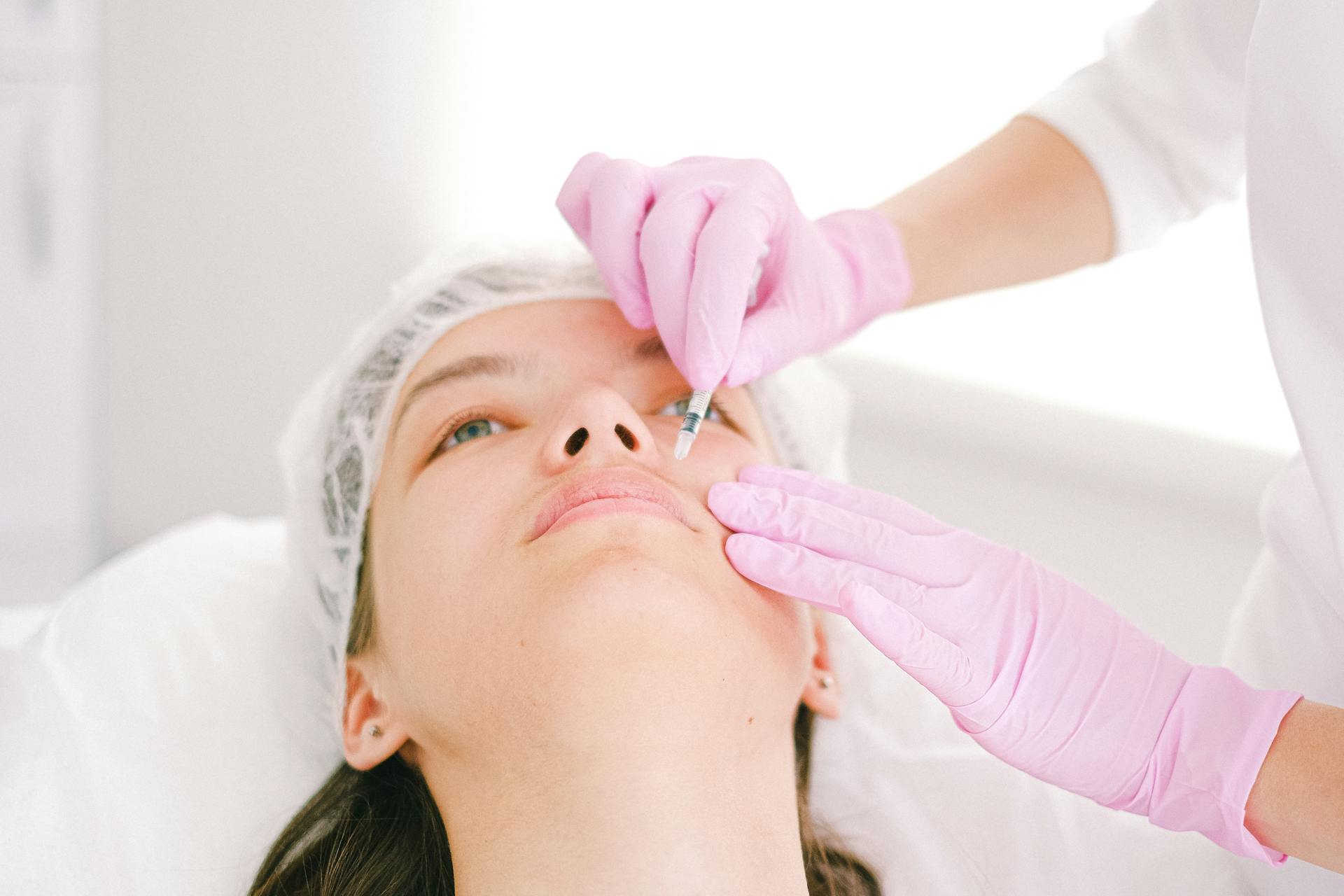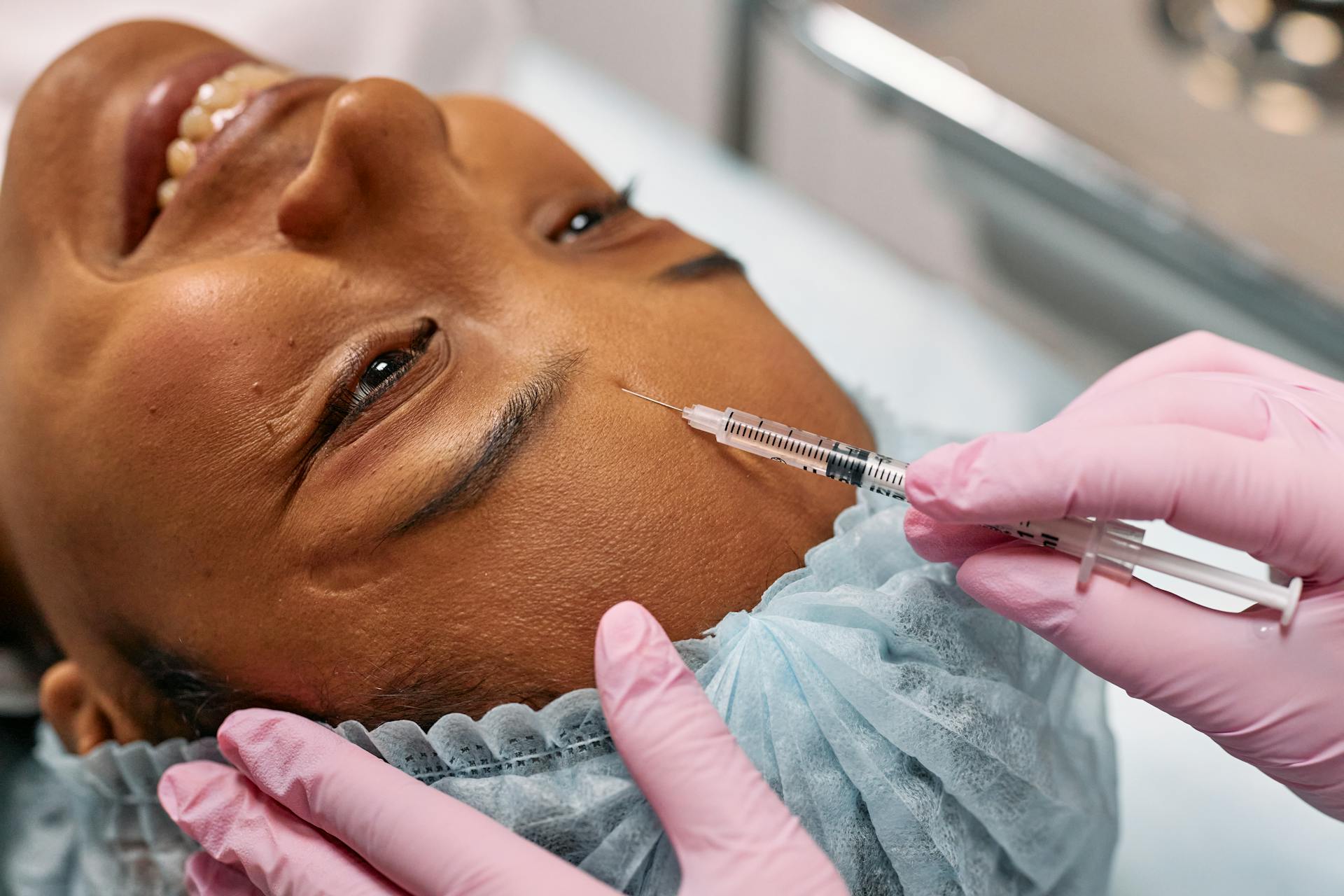
Botulinum toxin is a protein produced by the bacterium Clostridium botulinum, and is the most potent neurotoxin known to man. When injected in very small quantities, it can cause temporary paralysis of the muscles. Botox is the trade name for botulinum toxin type A, which is derived from the bacterium Clostridium botulinum.
Botox injections are used to temporarily reduce the appearance of wrinkles in the face. They are also used to treat a number of other conditions, such as migraines, excessive sweating, and muscle spasms.
The injection of botulinum toxin into the muscles of facial expression temporarily paralyzes them. This temporarily reduces the appearance of wrinkles, fine lines, and creases in the face.
Botox injections are usually given by a doctor or nurse. The injections are usually given in the doctor's office or a outpatient center. The doctor will clean the skin with an antiseptic and then inject the botulinum toxin into the desired area with a very fine needle.
Most people do not have any side effects from botulinum toxin injections. However, some people may have temporary side effects, such as pain, swelling, bruising, and headaches.
Botulinum toxin injections usually last for 3-6 months. The effects of botulinum toxin are not permanent and the wrinkles will gradually return over time.
Suggestion: Will Insurance Cover Masseter Botox
What are the benefits of botox?
One of the benefits of botox is that it can help to improve the appearance of wrinkles. It can also help to reduce the appearance of fine lines and help to improve the overall texture of the skin. In addition, botox can help to improve the elasticity of the skin and make it more supple. Additionally, botox can help to reduce the size of the pores on the skin and make them less visible. Finally, botox can help to increase the production of collagen and elastin, which can help to improve the overall appearance of the skin.
Explore further: Can Botox Help Tired Looking Eyes?
How does botox work?
Botox acts on nerve endings in muscles to prevent muscle fibers from contracting. It works by blocking the release of a neurotransmitter called acetylcholine. This neurotransmitter is responsible for telling muscles to contract. By injected small amounts of botox into specific muscles, the muscles can no longer contract as strongly. The result is a reduction in the appearance of wrinkles and fine lines.
Botox is most commonly used on the forehead, around the eyes, and on the upper part of the face. It can also be used to treat other areas of the body, such as the neck, hands, and armpits. The effects of botox usually last for 3-4 months.
The exact mechanism of how botox works is still not fully understood. It is thought that botox may work by interfering with the communication between nerve cells and muscles. Injecting botox into a muscle may prevent the nerve cells from sending signals to the muscles that tell them to contract. This interference can lead to a temporary paralysis of the muscles.
Some potential side effects of botox include headache, bruising, and temporary drooping of the eyelid. Most side effects are mild and resolve within a few days.
Is botox safe?
There is no easy answer when it comes to the safety of botox. On one hand, botox is a medical procedure that has been approved by the FDA and has been used safely for many years. On the other hand, there are some potential risks involved with any medical procedure, and there have been a few reports of adverse effects from botox use.
Overall, the vast majority of people who have received botox injections have been very satisfied with the results and have not experienced any serious side effects. However, as with any medical procedure, there are a few potential risks that should be considered before undergoing treatment.
The most common side effect of botox is temporary bruising or redness at the injection site. This typically subsides within a few days and is nothing to be concerned about. There is also a small risk of developing a droopy eyelid or brow, but this usually goes away within a week or two. In very rare cases, botox can cause an allergic reaction, but this is usually easily treated with antihistamines.
The bottom line is that botox is generally a safe and effective way to reduce the appearance of wrinkles and other signs of aging. The risks involved are very small, and the vast majority of people who receive botox injections are very happy with the results. If you are considering botox, be sure to consult with a qualified physician to ensure that it is the right treatment for you.
A fresh viewpoint: How Often Do People Get Botox?
How long does botox last?
How long does botox last? Botox is a popular cosmetic treatment that can temporarily reduce the appearance of wrinkles. It is made from a neurotoxin derived from the bacterium Clostridium botulinum. Botox is most commonly injected into the forehead, around the eyes, and into the facial muscles that cause wrinkles. The toxin works by blocking the release of a neurotransmitter that controls muscle contraction. This temporarily relaxes the muscle and reduces wrinkles. The effects of botox usually last for three to six months.
Check this out: Why Does My Botox Not Last Long?
What are the side effects of botox?
The side effects of botox are temporary and typically last three to four months. The most common side effects are headache, bruising, and temporary eyelid droop. There is a small risk of more serious side effects, including difficulty swallowing, breathing, or speaking; hoarseness; and vision changes. If any of these side effects occur, they typically resolve within a week or two.
How much does botox cost?
Cosmetic procedures, such as Botox injections, are not typically covered by insurance. This means that patients will have to pay for the procedure out of pocket. The average cost of Botox is $350, but prices can range from $175 to $600. The price will depend on the location of the injection, the number of units required, and the experience of the injector.
Botox is a medication that temporarily relaxes wrinkles in the face by blocking nerve signals. It is most commonly used on the forehead, around the eyes, and in the neck area. Botox is injected into the skin using a thin needle. The effects of Botox typically last for 3-4 months.
People choose to have Botox injections for many different reasons. Some people want to look younger, while others want to look less tired or angry. Botox can also help people who have certain medical conditions, such as blepharospasm (uncontrollable blinking) or migraine headaches.
The decision to have Botox should be made with the guidance of a qualified medical professional. Patients should be aware of the potential risks and side effects of the procedure, which include bruising, swelling, and infection. They should also be aware that the results of Botox are not permanent and that additional treatments may be necessary to maintain the desired effect.
For another approach, see: Where to Get Botox to Look Younger?
Where can I get botox?
Botox is a popular cosmetic treatment that can be used to reduce the appearance of wrinkles. It is made from botulinum toxin, which is a neurotoxin that is produced by the bacterium Clostridium botulinum. When injected into the skin, it relaxes the muscles that cause wrinkles.
There are a number of places where you can get botox injections. Many cosmetic surgeons, dermatologists, and other medical professionals offer botox treatments. There are also a number of medspas and other establishments that offer botox injections.
The cost of botox treatments can vary depending on a number of factors, including the location of the injections, the amount of botulinum toxin used, and the number of injections needed. In general, botox treatments costs range from $200 to $600 per treatment.
If you are interested in getting botox injections, you should consult with a medical professional to see if it is right for you.
Broaden your view: Botox Injections
Will botox help hooded eyes?
The answer to this question is not as straightforward as a simple yes or no. Botox can help to improve the appearance of hooded eyes in some cases, but it is not a guaranteed solution for everyone.
The main reason that botox can help to improve the appearance of hooded eyes is that it can help to reduce the appearance of wrinkles and fine lines in the area. This is because botox works by temporarily paralyzing the muscles in the area, which reduces the ability of the muscles to contract and thus, reduces the appearance of wrinkles.
In addition, botox can also help to lift the brows, which can often droop due to the weight of the skin on the eyelids. This can help to open up the eye area and make it look less hooded.
However, it is important to note that botox is not a cure-all for hooded eyes. In some cases, the problem may be due to excess skin on the eyelids, which botox cannot address. In other cases, the problem may be due to underlying medical conditions, such as ptosis, which is a condition where the eyelid droops due to a weakness in the muscles that control it. In these cases, botox may not be an effective treatment.
It is also important to note that botox is not a permanent solution. The effects of botox typically only last for 3-6 months, after which time the wrinkles will start to reappear. For this reason, it is important to consider whether or not you are willing to undergo regular treatment in order to maintain the results.
Overall, botox can be an effective treatment for reducing the appearance of wrinkles and fine lines in the area around the eyes. However, it is not a guaranteed solution for everyone and it is important to consider all of the potential risks and side effects before deciding if it is right for you.
Frequently Asked Questions
What is Botox and why is it done?
Botox is a medication that blocks certain chemical signals from nerves. These signals cause muscles to contract. The most common use of these injections is to temporarily relax the facial muscles that cause wrinkles in the forehead and around the eyes. Botox injections are also used to treat conditions that affect how the body functions.
How long does it take for Botox to work?
The effect of Botox usually takes a few days to begin to show but it can take up to two weeks for the full impact to be felt.
How does Botox work on wrinkles?
Botox is a medication that works by blocking nerve signals from the muscles. This makes the wrinkles relax and soften.
How does botulinum toxin injections work?
Botulinum toxin is derived from the bacterium Botulism toxin. Administration of botulinum toxin results in paralysis of skeletal muscle, resulting in a reduction or elimination of the muscle’s ability to contract.
How does Botox work on forehead wrinkles?
Botox injections in the forehead cause the same kind of muscle relaxation as occurs during sleep. The injected areas don't contract, which reduces the wrinkles and makes them easier to smooth out with a topical cream.
Sources
- https://www.drberg.com/blog/is-botox-really-safe
- https://www.phiclinic.com/benefits-of-botox-in-london/
- https://zerogravitynky.com/11-benefits-of-botox/
- https://sozoclinic.sg/how-long-does-botox-last/
- https://www.sutured.com/is-botox-safe/
- https://harleystreet-md.co.uk/blog/is-botox-safe/
- https://clinicinus.com/benefits-of-botox/
- https://revivewellnessgroup.org/blog/5-impressive-benefits-of-botox-injections/
- https://www.huffpost.com/entry/is-botox-safe-heres-what_b_10065312
- https://botoxbruising.com/is-botox-safe
- https://elbecouture.com/how-does-botox-work/
- https://www.aao.org/eye-health/treatments/how-does-botulinum-toxin-botox-work
- https://poppcosmeticsurgery.com/blog/7-undeniable-benefits-of-botox/
- https://www.entlubbock.com/blog/benefits-of-botox/
- https://doctorkaronclinic.com/news/7-undeniable-benefits-of-botox/
Featured Images: pexels.com


